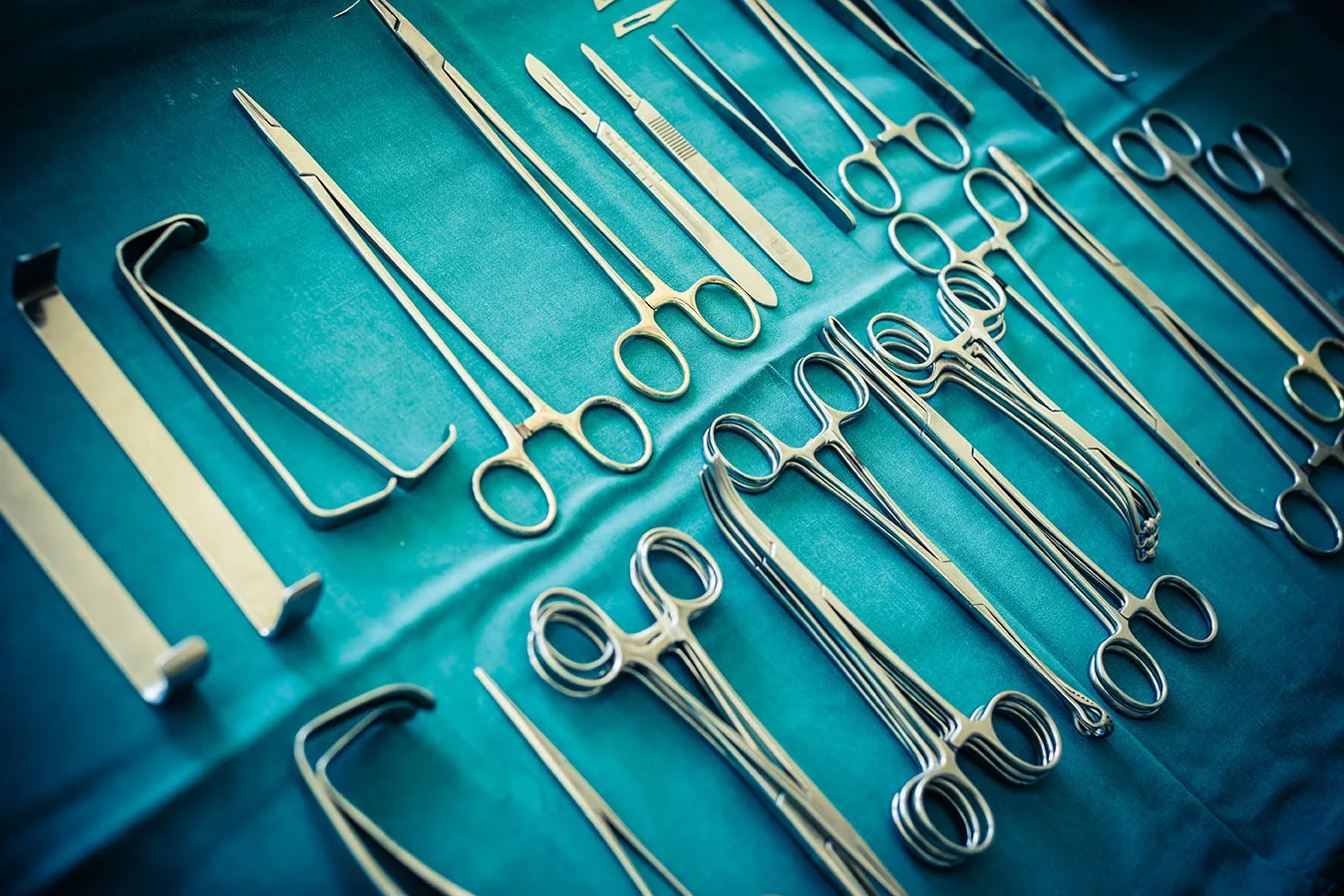They are also known as external skeletal fixation or external fixator, is a surgical procedure used to stabilize broken bones or fractures to allow bones to heal properly. External Fixators typically involve placing pins or screws directly into bones above and below the fracture site. These pins are connected to a metallic framework on the outside of the body. The external framework holds the bone fragments in proper alignment and prevents motion at the fracture site, allowing it to heal.
Types of External Fixators
There are different types of external fixators used depending on the location and complexity of the fracture:
Unilateral External Fixator: A basic type that involves pin placement on one side of the fracture only. It is used for simple External Fixators with minimal displacement of bone fragments.
Circular External Fixator: Features rings or half-rings placed on both sides of the fracture and connected with longitudinal rods. The rings prevent rotation and angular motion at the fracture site. Commonly used for fractures of long bones like tibia and femur.
Hybrid External Fixator: Combines features of circular and unilateral fixators by using longitudinal pins or wires along with ring fixation. Provides stability in multiple planes.
Rail External Fixator: Features two parallel rods secured to bone segments on either side of the fracture. Cross bars or clamps are then attached between the rods to stabilize bone pieces. Used for complex fractures with extensive soft tissue damage.
Indications for External Fixation
Some key indications when External Fixators may be used include:
– Open or compound fractures where bone loss or contamination is present. This prevents infection spread and allows for dressing changes.
– Highly comminuted or segmental fractures with multiple bone fragments. External fixation provides three-dimensional stability.
– Fractures in areas with poor soft tissue coverage. The minimally invasive pins reduce trauma to at-risk soft tissues.
– Pre-operative stabilization before definitive internal fixation or bone grafting.
– Limb lengthening or reconstruction procedures over time. They allow for gradual adjustment.
Surgical Procedure for External Fixation
The surgical procedure for applying it typically involves:
– Cleaning and prepping the injury site under anesthesia. Antibiotics may also be administered.
– Making small skin incisions for inserting K-wires, half pins or screws into the bone on either side of the fracture under image guidance like fluoroscopy.
– Connecting the pins to an external metallic fixator frame and tightening its clamps and bolts to achieve reduction of bone alignment.
– Closing any open skin wounds and applying sterile dressings. A padded splint or brace may also be used.
– Periodic follow-up for tightening or adjusting the as the bone heals over weeks or months.
Advantages and Disadvantages
External fixators have some key advantages over internal fixation techniques:
– Minimally invasive with less soft tissue stripping compared to open plating or nailing procedures.
– Fracture hematoma and blood supply is kept intact without disrupting blood flow.
– Allows for precise reconstruction and stabilization of multiple bone fragments.
– Easier postoperative management with direct access to injury site for cleaning and dressing.
– Option to stabilize open or contaminated fractures without introducing additional metalwork.
However, They Also Have Some Disadvantages:
– Pins pose risk of infection, loosening, or damage to nerves/blood vessels if misplaced.
– Require close monitoring and adjustments during the fixation period which may last months.
– Mobility and function can be limited by the large metal frame construct on the body.
– Less rigid fixation compared to plates or nails, allowing some relative motion at the fracture site.
– Not suitable for heavily comminuted fractures with extensive bone loss.
Complications
While they provide significant benefits, certain complications can potentially arise and include:
– Pin site infections are common if pins are not well cared for. Prompt treatment with oral antibiotics is usually effective.
– Delayed unions or nonunions can occur if fixation stability is insufficient or bone healing is suboptimal.
– Stiffness and joint contractures may result from prolonged immobilization in a fixed position.
– Nerve injuries due to displaced or misplaced pins can cause temporary or permanent neurological symptoms.
– Refractures may happen after fixator removal due to residual weakness of the partially healed bone.
– Loss of reduction leading to malunion is possible if the external fixator comes loose from its bone attachments.
With expertise and care, risks are minimized and external fixation provides a reliable method for treating many fracture scenarios. Monitoring for complications allows for prompt management.
external fixation is a versatile tool that offers minimum invasion and maximum visibility when internal fixation is not possible or preferable. Advancements continue to improve fixator designs and minimize risks. Judicious patient selection combined with surgeon experience helps optimize outcomes for fractures best suited to this approach. They play an important role within the orthopedic armamentarium when internal devices are contraindicated.
*Note:
1. Source: Coherent Market Insights, Public Source, Desk Research
2. We have leveraged AI tools to mine information and compile it.
About Author - Ravina Pandya
Ravina Pandya,a content writer, has a strong foothold in the market research industry. She specializes in writing well-researched articles from different industries, including food and beverages, information and technology, healthcare, chemicals and materials, etc. With an MBA in E-commerce, she has expertise in SEO-optimized content that resonates with industry professionals. LinkedIn Profile




